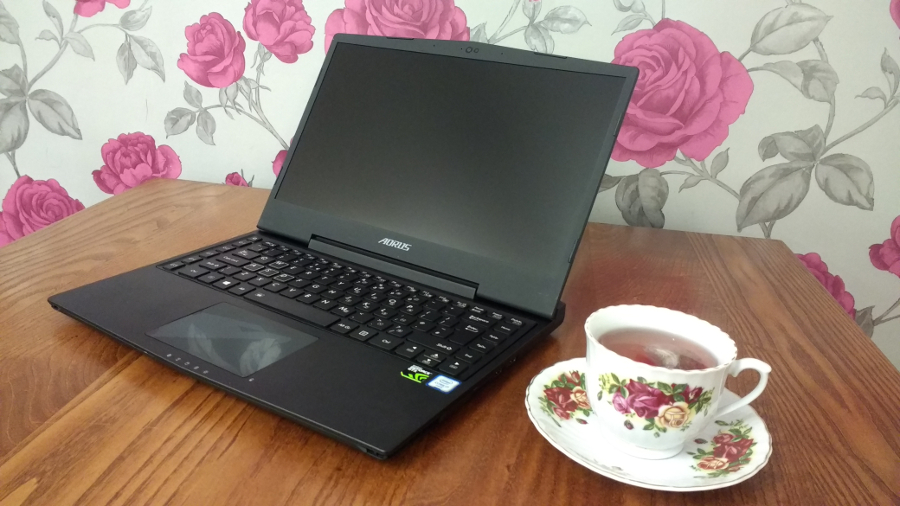TechRadar Verdict
A genuinely portable gaming laptop that performs above and beyond its nearest rivals.
Pros
- +
Lightweight
- +
Impressive benchmarks
- +
Macro buttons
- +
Overclockable from the box
- +
Quiet
Cons
- -
A little pricey
- -
Slightly thick
- -
Difficult to get hold of
Why you can trust TechRadar
There are a few 13-inch gaming laptops rallying for position at the start of 2017. There’s the ubiquitous Razer Blade that’s managed to draw even the most ardent of Apple fans back to the Windows fold, and Alienware has upped its game with its 13-inch R3 model. Now it’s the turn of lesser known Aorus, a subsidiary of Gigabyte who’ve come to shake up Razer’s domination of the portable gaming laptop market.
Eagle-eyed design
Adorned with its trademark eagle, itself inspired by Horus, the Egyptian god of war, the Aorus looks like a gamer’s friend. It’s bathed in classic matte black and the WASD keys are outlined just in case you weren’t sure which buttons to push to move about.
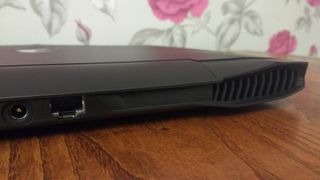
That being said, it’s nowhere near as gaudy as others in the same market. The shape is relatively subtle and only a little chunky towards the rear where the fans sit. There are no flashing disco lights, in fact it looks, dare we say it, classy, and wouldn’t look too out of place in a meeting room. Aimed at the Razer crowd, it's a lightweight, portable gaming laptop that under the hood is powerful.
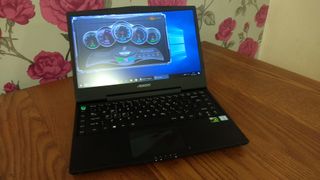
First up, the QHD+ 3,200 x 1,800 display is quite frankly gorgeous. Everything’s pixel perfect and viewable from all angles. At both the highest and lowest brightnesses it’s consistent and is kept safe with a strong aluminium backing. The anti glare works well in harsh lighting and is clearly visible from shallow angles if you need to share the screen for any reason.
Just behind it, as just mentioned, there’s chunk at the base, which reminds us of that old Renault Mégane advert about “shaking that ass”. The “ass” means that the hinge feels very well protected. OK so it’s nowhere near as elegant as a Lenovo watch hinge, but it’s a smooth opener and feels sturdy too.
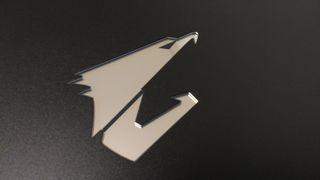
On the back of the screen sits Aorus’ eagle logo in the centre. It’s mirrored and also glows blue when on, similar to the apple on an old MacBook. The whole thing has an aluminium outer shell, which means it can take a few knocks and dinks.
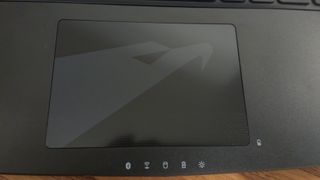
Keyboard and trackpad
On the base, the trackpad is compact with a shiny Aorus eagle darting diagonally across, a pleasant design touch. It’s also responsive and of a higher quality than a lot of rivals, although admittedly gamers will be using it infrequently. But if this is to double as a work computer it’s good to know the trackpad is functional and reliable. It appears to have been upgraded since the v3 incarnation.
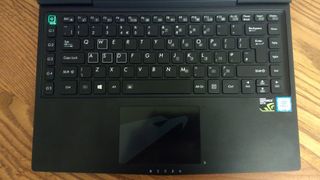
The keyboard is responsive, if a slightly cramped, something to be expected in a gaming laptop that’s this compact. But it’s very easy to get used to as none of the keys are in unexpected places, everything just seems a little bit smaller.
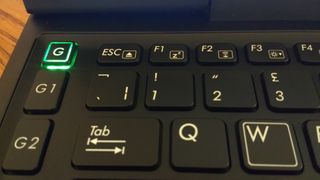
On the left side are five ‘G’ keys, these are macro shortcuts that can be assigned using an Aorus program Macro Engine. The sixth key at the top toggles between the five maps, it also changes colour depending on which map you have assigned. The program itself is easy to use and has a number of presets and empty maps to assign your own custom keysets to.
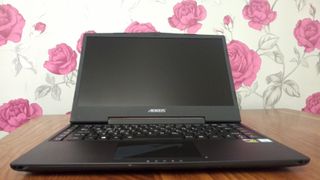
Powerful details
Aorus has obviously taken a lot of care in the design including that of the power supply which has a USB socket. So if you don’t have to have a charger on you, you won’t have to get the entire computer out of the bag to charge something, you just need the power block and a cable.
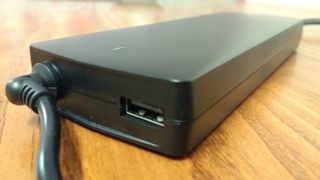
Another power feature is that if the laptop is off or sleeping, just hold down the right trackpad button and the lights that normally display hard disk usage and charging etc, now act as a five point battery indicator. Handy for a quick check. And by default it doesn’t wake on opening, there’s a subtle but well-placed power button on the right for waking it.
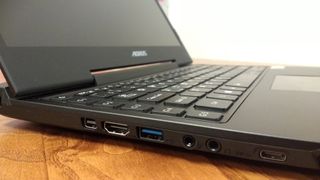
CPU: 2.7GHz Intel Core i7-6820HK (quad-core, 6MB cache)
Graphics: NVIDIA GeForce GTX 1060, 6GB / Intel(R) HD Graphics 530, 4GB
RAM: 16GB DDR4 (2,400MHz)
Screen: 13.9" IGZO QHD+ Display: Ultra-high 3200 x 1800 res. Wide Viewing Angle
Storage: 2x 512GB Samsung PM951 SSD
Ports: USB 3.1 (Type-C)*1, USB 3.0 (Type-A)*3, HDMI 2.0, Mini DisplayPort, RJ45, Mic-in, Earphone-out (SPDIF), SD Card Reader
Connectivity: Killer E2200 LAN, Wireless 802.11ac, Bluetooth V4.1 + LE
Camera: HD Camera
Weight: 1.8kg
Size: 33 x 26.4 x 2.29cm (W x D x H)
Its sides sport three USB 3.0s (two on the right, one on the left) and a USB C Thunderbolt on the left side. The power supply socket is on the rear which keeps it out of the way if you’re intending to load up the USBs. It’s also next to the network socket which is an essential part of any serious gamer’s kit.
The X3 is surprisingly light, coming in at 1.8kg meaning it’s less weighty than both the Razer and Alienware. While it’s never going to be as thin as the Razer, it’s a respectable 2.29cm, still a portable and packable machine considering it’s designed for gamers.
V6 upgrades
Aorus is currently releasing v6 upgrades to their entire range and we recently reviewed their 15.6 inch X5. Another fine machine and power wise it’s a step up. Outwardly there are a few little differences too, one of the main being that this doesn’t have the small orange logo above the keyboard, a design decision for the best we think as it simplifies the look.
Intriguingly the X3 holds its own against the more powerful X5 in our benchmark tests, as you'll see on the next page.

'We’ve let them down': Sonos gets a new CEO after its disastrous year, and it looks like better times are ahead

SteelSeries Apex Pro TKL Wireless Gen 3 review: a premium gaming keyboard with stellar analog performance – and a price to match

Fortnite Hatsune Miku has leaked and she looks... pretty rough
